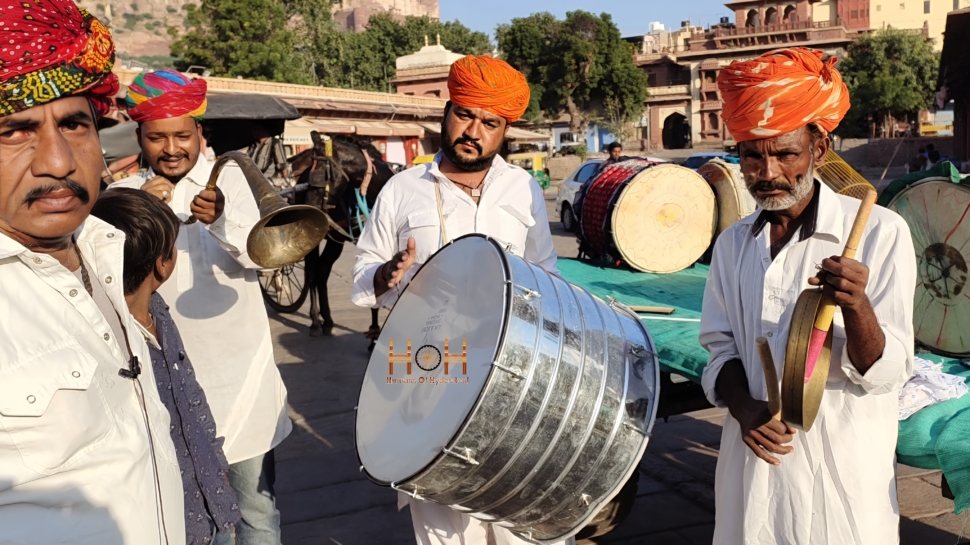“It’s hard to put into words what the ‘Dhol Thali’ means to us. You don’t just play it – you feel it. Growing up in the Marwar region of Rajasthan, the sound of the dhol was always part of our lives. Whether at weddings, festivals, or community gatherings, it surrounded us.
I learned this folk art from my father, who learned from his. In our village, there wasn’t a formal way to teach it; we picked it up just by being around it. As we grew older, we realized it wasn’t just about making music. It’s a way of telling our story. The beat carries the history of our land and our people. The Dhol Thali often takes center stage during festivals like Gangaur and Teej. It’s not just about entertaining people– it’s about keeping our connection to the past alive.
Crafting the dhol is an art in itself. Traditionally, the shell is made from sturdy wood, often from local trees. We select the best quality wood to ensure the sound resonates perfectly. The skin is usually dried goat or buffalo hide. It takes time to get the right tension, as it directly affects the sound. The artisans who make these instruments pass down their techniques through generations, ensuring the craft stays alive.
In order to keep these traditions alive, we started traveling outside Rajasthan, performing wherever we could get opportunities through various programs – in big cities, small towns, festivals, and even private events. Slowly, people began to take notice. We’ve played in South India as well, recently in Hyderabad in the Hunar Haat event organised by the Ministry of Tourism, Govt of India. There’s something universal about the dhol, something that brings people together, no matter their background.”
